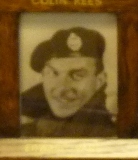The Village of Penally is situated just a few miles along the south Pembrokeshire coast from Tenby. The village and surrounding area is rich with history, dating back to the Bronze Age, and was an important Medieval Manor. Recently Penally has become more well known due to its military firing range, and the tourist industry. The War Memorial to the fallen of Penally Village in both World Wars takes the form of a granite block, set in a memorial garden, with a marble plaque affixed, listing the names of the fallen. There are older marble plaques inside the Parish Church at Penally, which commemorate the fallen of the Great War and also the two sons of Lord St. David’s who fell. Many thanks to Angela Jones for supplying the photographs of the main War Memorial.
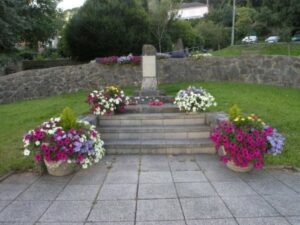
World War One, 1914-1918
Andrea Angel, MA, BSc, Scientist. Andrea was born at Bradford on 9 January 1877, the son of Thomas Angel and Angelina Georgina Maria Angel (nee Rabagliati). His father was originally from Pembroke Dock, and had spent much of his working life travelling the country, in his duties as a Government Tax Inspector. He moved his family back to Pembrokeshire after retiring, to live at Glan-y-Mor, Penally. Andrea had been educated at Exeter school, won a scholarship for Christ Church, Oxford, where he achieved first-class honours in chemistry and was a Dixon Research Scholar. He married Mary Letitia Stock of Oxford in 1904, and the couple had two girls, Marion and Heather. Andrea gave up his work at Oxford shortly after the outbreak of war, and was appointed assistant manager of the Silvertown TNT Factory. His wife took up a position in the same factory, as Lady Superintendent. During the morning of 19 January 1917, a fire broke out in one of the processing rooms. Andrea spotted the fire, and called the Fire Brigade, before rushing into the factory to evacuate the staff. A massive explosion of around fifty tonnes of TNT then tore the factory apart, strewing debris for miles. Andrea was 40 years old when he died that day, and was one of 73 people killed in the blast. His body was found among the ruins, and he was buried in the East London Cemetery. On 20 June 1917, Andrea was posthumously awarded the Edward Medal (First Class). Civilians who died in WW1 are not eligible for commemoration by the CWGC, and Andrea is not even commemorated on any known war memorial locally. His youngest daughter, Heather Grace Angel, became a famous actress, starring on stage and screen during her prolific career. She has a star on the Hollywood Walk of Fame.
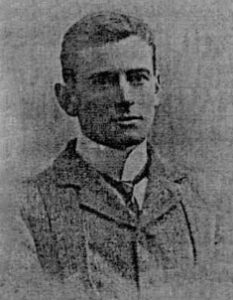
Harold Berkeley Beynon, Private, 33181, Hampshire Regiment. Harold was born in 1897, the son of Thomas Beynon and Laura Annie Beynon (nee Thomas), of Holloway Farm, Penally. He later resided at St. Johns Hill, Tenby, where he worked as a groom prior to enlisting into the Pembrokeshire Yeomanry on 1 April 1914. Following the outbreak of war, Harold was mobilised with the Pembroke Yeomanry, but was soon transferred to the 3rd Battalion, Welsh Regiment. Due to his young age, he remained on home service until being drafted to Salonika on 17 October 1916, joining the 10th Battalion, Hampshire Regiment, which was attached to 82 Brigade, 27th Division. Harold became ill with malaria while in Salonika and returned home for treatment. His service papers show that he was discharged on 17 April 1919 due to ill health following his bout of malaria. His health declined rapidly after being discharged from the army and he died at home of meningitis and encephalitis on 6 May 1919. The 21-year-old was buried in St. Florencius Churchyard, St. Florence. He was originally not commemorated as a war casualty by the CWGC, but following my research, he has recently (January 2012) been accepted for commemoration by the CWGC, who initially added his name to the Brookwood (1914-1918) Memorial, where it remained until the location of his grave was verified. Harold is also commemorated on a plaque within St Florence Church and on the Tenby war memorial.
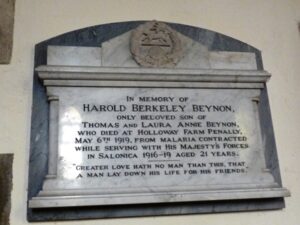
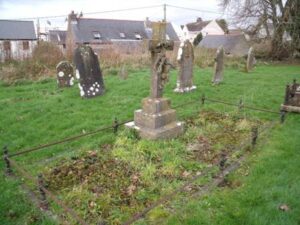
Charles Lindsey Evans, Sergeant, 8439, Royal Welsh Fusiliers. Charles was born in 1886, the son of James Evans and Jane Evans (nee Scourfield), of Alma, Penally. He enlisted into the Royal Welsh Fusiliers several years prior to the war and by 1911 was in Quetta, India with the 2nd Battalion, Royal Welsh Fusiliers. He left the army twelve months later and found work as a coalminer in Aberaman. Charles then married Sarah Hannah Mashford Knight at Aberdare on 11 December 1913 and the couple set up home at 34, Sunny Bank Street, Aberaman. Soon after the outbreak of war Charles was mobilised from the army reserve at Cardiff and was posted to the 9th Battalion, Royal Welsh Fusiliers, which was attached to 58 Brigade, 19th (Western) Division. The Division had moved to France in the summer of 1915, and saw its first major action during the Battle of Loos on 25 September 1915. It moved to the Somme by the summer of 1916, and took part in the initial attack against the village of La Boiselle. The Division remained on the Somme throughout the battle, and sometime in October, Charles became wounded. He was evacuated to the military hospital at Abbeville for treatment, but sadly died of wounds there on 3 November 1916. Charles was 30 years old, and is buried at Abbeville Communal Cemetery Extension, France.
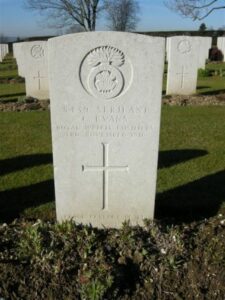
William John Evans, Private, 19094, South Wales Borderers. William was born in 1890, the son of George Evans and Martha Jane Evans (nee Lewis), of Frankleston, Penally. He enlisted at St. Leonard’s into the Army, and was posted to the 7th Battalion, South Wales Borderers, which was attached to 67 Brigade, 22nd Division. William landed in France with the division on 5 September 1915, however after only a short time in the line, on 27 October 1915 the Division, having been moved by train to Marseilles, began to embark for Salonika. It completed concentration there in November, and took part in the retreat from Serbia during December, 1915. It remained there for the duration of the war, fighting in several battles, there. It was during a later action, at the Battle of Doiran on 9 May 1917, that William was fatally wounded and died. He was 27 years old, and is buried at Karasouli Military Cemetery, Greece.
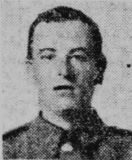
John Lewis Jenkins, Gunner, 371277, Royal Garrison Artillery. John was born in Penally Village in 1899, the son of Lewis Jenkins and Selina Jenkins (nee Cole). The family later resided at Treberth Farm, Saundersfoot. John enlisted into the Pembrokeshire Battery, Royal Garrison Artillery soon after the outbreak of war, and was posted to their 409th Siege Battery, which was attached to the Third Army. John was wounded during the Third Battle of Ypres, or Passchendaele, and was brought to the Casualty Clearing Station at Vlamertinghe, where he died of his wounds on 17 September, 1917. The 19-year-old was buried in Vlamertinghe New Military Cemetery.
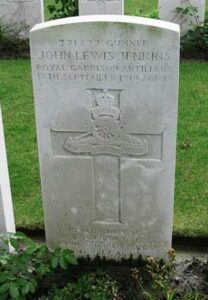
The Honorable Colwyn Erasmus Arnold Philipps, Captain, Royal Horse Guards. Colwyn was born on 11 December 1888, the son of John Philipps, the Right Honorable the 1st Viscount St. David’s, P.C. and his wife, Leonora Gerstenberg, of 3, Richmond Terrace, Whitehall, London. He was educated at Eton and Sandhurst. At the age of 20 he received a Commission into the Royal Horse Guards, then on 30 July 1909 had been promoted to full Lieutenant, and was Captain by the outbreak of war. The R.H.G. were attached to the 7th Cavalry Brigade, 3rd Cavalry Division on 1 September 1914 and landed at Zeebrugge at the beginning of October. They fought in the defence of Antwerp before being sent to Ypres, taking part in the First and Second Battles of Ypres. It was during Second Ypres, at the Battle of Frezenberg, that Colwyn was killed in Action on 13 May 1915, aged 26. He is commemorated on the Ypres (Menin Gate) Memorial, on Panel 3. In a letter sent to his bereaved parents by a brother Officer, it was said “He fell in an attack on the German Trenches on Thursday, 13th. His end was worthy as his life, as he was the first man in the German trenches and killed five Germans before he was shot in the head at close quarters and instantly killed.” His brother Roland also fell. During his short life, Colwyn had gained a strong reputation for his poetry, putting him on the list of the famed War Poets of the Great War. His poems were published after his death. Both brothers are commemorated on a plaque inside Penally Church, and not on the main memorial.
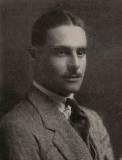
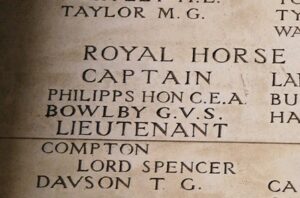
The Honorable Roland Erasmus Philipps, MC, Captain, Royal Fusiliers. Roland was born on 27 February 1890, the second son of John Philipps, the Right Honorable the 1st Viscount St. David’s, P.C. and his wife, Leonora Gerstenberg, of 3, Richmond Terrace, Whitehall, London. He was educated at Winchester College and New College, Oxford. Roland was an important early member of the Boy Scouts. In July 1912 he was appointed Assistant District Commissioner for East London. In 1913 he was appointed Commissioner for North East London, and in November 1913 he was made responsible for all of East London. Roland was commissioned into the 9th Battalion Royal Fusiliers, part of 36 Brigade, 12th Division. The Division assembled at Shorncliffe during August 1914 and moved to France at the end of May 1915. Their baptism of fire was at Ploegsteert Wood on 23 June 1915, and later at the Battle of Loos. They held the line at Loos until June, and they were moved in readiness for the Somme Offensive. They relieved the decimated 8th Division at Ovillers-la-Boiselle on 1 July, and took two lines of German trenches, but then stuttered to a halt. On 7 July 1916 the Brigade attacked again, but were decimated by German shell-fire in Mash Valley, but still managed to capture their objective of Ovillers. Roland was killed in Action this day, aged 26. He is buried in Aveluy Communal Cemetery Extension, Grave H. 32. His brother Colwyn also fell. Both brothers are commemorated on a plaque inside Penally Church, and not on the main memorial.
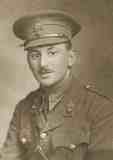
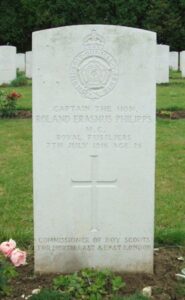
George Ernest Rees, Private, 55444, Royal Welsh Fusiliers. George was born at Llanboidy in 1896, the son of Thomas Rees and Elizabeth Rees (nee Richards). The family later moved to Kiln Park, Penally. George enlisted at Tenby into the Pembrokeshire Yeomanry some time prior to the war, with the service number 373. He remained on home service for the first two years of the war then in the summer of 1916 was drafted to France, joining the 16th Battalion, Royal Welsh Fusiliers, which was attached to 113 Brigade, 38th (Welsh) Division. George joined the Division as one of a batch of reinforcements after the fighting at Mametz Wood in July 1916. The Division had then been pulled from the line, and took up positions in the line north of Ypres, at Boesinghe, where it was to remain for twelve months. George was killed in action at Ypres on 22 June 1917, while his Battalion was in the front line at the canal bank. He was 21 years old, and is buried at Bard Cottage Cemetery, Belgium.
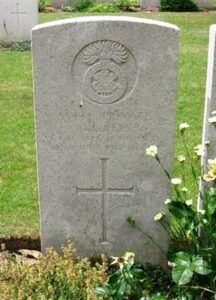
William John Williams, Stoker 2nd Class, K/23943, Royal Navy. William was born on 12 December 1896, the son of James Williams and Mary Ann Williams, of East Lodge, Penally. He worked as a gardener with his father prior to enlisting into the Royal Navy on 20 January 1915, and was posted to the Royal Naval Barracks at HMS Vivid II, Portsmouth to train as a Stoker. William took ill and died of fibrous lung on 9 October 1915. The remains of the 18-year-old were conveyed home and he was buried in Penally Congregational Chapelyard.
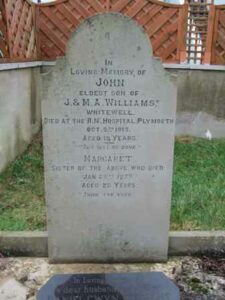
World War Two, 1939-1945
James William Douglas Armstrong, Major, 149357, East Surrey Regiment. James was born on 6 June 1919, the son of Leslie Douglas Armstrong, and of Mary Anne Armstrong (nee Woods), of New Malden, Essex. He married Gwendoline Edna Vare, of Alma Cottage, Penally, in 1943. James had enlisted into the army on 29 November 1940, rising to the rank of Major with the East Surrey Regiment. He was attached to the Durham Light Infantry when he died at the Keighley and Victoria District Hospital in Yorkshire on 22 February 1945. The 25-year-old was buried in St. John the Baptist Churchyard, Malden, England on 27 February. His widow, Gwendoline, a nurse, also lost her brother, Edward George Vare, during the war.
Edmund David James, Captain, 85626, South Wales Borderers. Edmund was the son of Augustine Edmund Lee James and Ella Maxton James (nee Browne), of Penally Abbey, Penally. He had originally followed in his fathers footsteps, being commissioned into the South Wales Borderers, before joining the special forces. It is not known whether or not Edmund first served with the Commandos, but he later served with the Headquarters staff of 4th Parachute Brigade, Army Air Corps. After the invasion of Normandy on 6 June 1944, General Montgomery realised that the war could quickly be won if the British could swiftly force a passage over the River Rhine into Germany. After the British had pushed their way through northern France and Belgium into Holland, an airborne assault was launched on the Dutch town of Arnhem, with the aim of capturing the Rhine crossings. The airborne forces were to hold the bridges until being relieved by a ground force, XXX Corps, which was to push north through occupied Holland, with the help of American Airborne brigades, and relieve the British paratroopers at Arnhem. Edmund jumped into Arnhem with 4th Parachute Brigade on 17 September 1944. After an initial success, the paratroopers came under heavy fire from the German defenders of the town, which included an SS Panzer Division which British intelligence had not known of. Heavy fighting ensued, under desperate circumstances, with the paratroopers totally surrounded by Germans, with vastly superior firepower and numbers of men. On the third day, 4th Parachute Brigade led an attempt to break through the German lines north of Oosterbeek, but were held up, with heavy losses. On 20 September 1944, the fourth day of a planned two day defence, Edmund was killed during a gallant attempt to reach Oosterbeek to reinforce the beleaguered force which was holding the bridge, under the command of Colonel Frost. The 26-year-old was originally given a field burial near the Hartenstein Hotel, Oosterbeek, but was re-interred into Arnhem Oosterbeek War Cemetery on 24 August 1945.
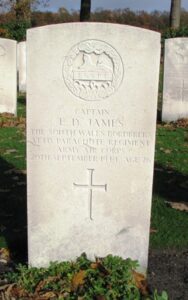
Ellis Trevor Skyrm, Craftsman, 7596453, Royal Electrical And Mechanical Engineers. Ellis was born on 19 December 1917, the son of Richard Thomas Skyrm and Priscilla Skyrm (nee Brown), of Penally. He married Mary Mildred Beams in Bootle in 1941 and the couple set up home at 44, Worcester Road, Bootle. Very little else is known of Ellis, but he died in Hexham Emergency Hospital, Northumberland on 15 November 1942. The remains of the 25-year-old were conveyed home and he was buried in St. Nicholas Churchyard, Penally.
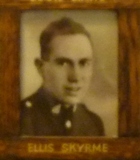
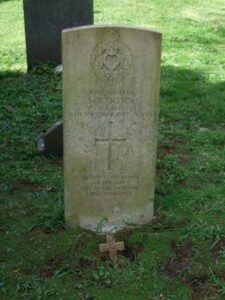
Charles George Smith, Trooper, 843890, Royal Armoured Corps. Charles was born in 1915. He resided at Rosewood, Penally prior to enlisting into the 8th King’s Royal Irish Hussars. The regiment was attached to the 7th Armoured Division, nick-named the Desert Rats, and fought in the Western Desert from 1940 onwards. After the fall of Rommel’s forces in North Africa, the bulk of the regiment returned to England, where it prepared for the forthcoming Normandy Landings, but Charles must have been attached to another unit, and took part in the landings at Sicily in 1943. Charles was killed in Italy on 5 March 1945. He was 29 years old, and is buried in Milan War Cemetery, Italy.
William Henry Stubbs, Petty Officer, D/JX. 130395, Royal Navy. William was born on 21 December 1911, the son of William Henry Stubbs and Elizabeth Ann Stubbs (nee Richards), of Tenby. He was known to his friends as Ginger. William had married Nancy Davies prior to the outbreak of war, and lived with her at Penally. Ginger served with the Royal Navy, as a Petty Officer, aboard HMS Cattistock, a Type I ‘Hunt’ Class Destroyer. Cattistock had been launched on 22 February 1940, and took part in the evacuation of troops from Le Havre during August 1940, receiving heavy damage. On 29 August 1944, William was aboard HMS Cattistock, while she was on duty in the Channel, alongside the frigate HMS Rettalick. The ships were intercepted by a group of German vessels, who were evacuating Le Havre. In the subsequent battle, the Cattistock received over 20 direct hits, including one to the bridge which killed the ship’s captain and several of her crew, including Ginger. His daughter was just four months old when he died and his wife Nancy never remarried. A plaque in memory of Ginger was placed on the wall of Tenby’s Fisherman’s Chapel, by the harbour, by his widow. William was 32 years old when he died that day, and his body was brought home to be buried at St. Mary Church Cemetery, Tenby.

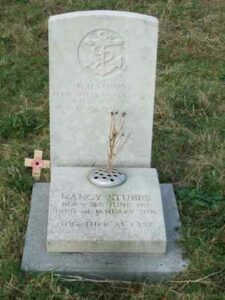
Edward George Vare, Serjeant, 7880459, Royal Armoured Corps. Edward was born in 1910, the son of Percy Vare and Elizabeth Mary Vare (nee Davies), of Penally. He had married Maud Davies, of Waungilwen, Cardiganshire in Fulham in 1935. Edward enlisted into the army and was posted to the 12th Royal Tank Regiment, Royal Armoured Corps. The regiment fought in the North African campaign as part of the 21st Tank Brigade, first with the First Army, then the Eighth Army, where it saw heavy fighting whilst helping drive the Afrika Korps back towards Tunis. Edward was killed in action in Italy on 6 May 1943. The 32-year-old is buried in Massicault War Cemetery, near Tunis.
